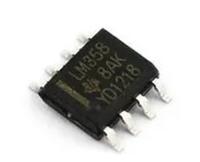Data Sheet
FS6377-01/FS6377-01g Programmable 3-PLL Clock Generator IC
eight bits of data into the addressed register. A final
acknowledge is returned by the device, and the master
generates a STOP condition.
If either a STOP or a repeated START condition occurs
during a register write, the data that has been transferred
is ignored.
5.2.3 Random Register Read Procedure
Random read operations allow the master to directly read
from any register. To perform a read procedure, the R/W
bit that is transmitted after the seven-bit address is a logic-
low, as in the register write procedure. This indicates to the
addressed slave device that a register address will follow
after the slave device acknowledges its device address.
The register address is then written into the slave's
address pointer.
Following an acknowledge by the slave, the master gen-
erates a repeated START condition. The repeated START
terminates the write procedure, but not until after the
slave's address pointer is set. The slave address is then
resent, with the R/W bit set this time to a logic-high,
indicating to the slave that data will be read. The slave will
acknowledge the device address, and then transmits the
eight-bit word. The master does not acknowledge the
transfer but does generate a STOP condition.
5.2.4 Sequential Register Write Procedure
Sequential write operations allow the master to write to
each register in order. The register pointer is automatically
incremented after each write. This procedure is more
efficient than the random register write if several registers
must be written.
slave, the master is allowed to write up to sixteen bytes of
data into the addressed register before the register
address pointer overflows back to the beginning address.
An acknowledge by the device between each byte of data
must occur before the next data byte is sent.
To initiate a write procedure, the R/W bit that is transmitted
after the seven-bit device address is a logic-low. This
indicates to the addressed slave device that a register
address will follow after the slave device acknowledges its
device address. The register address is written into the
slave's address pointer. Following an acknowledge by the
Registers are updated every time the device sends an
acknowledge to the host. The register update does not
wait for the STOP condition to occur. Registers are
therefore updated at different times during a sequential
register write.
5.2.5 Sequential Register Read Procedure
Sequential read operations allow the master to read from
each register in order. The register pointer is automatically
incremented by one after each read. This procedure is
more efficient than the random register read if several
registers must be read.
Following an acknowledge by the slave, the master
generates a repeated START condition. The repeated
START terminates the write procedure, but not until after
the slave's address pointer is set. The slave address is
then resent, with the R/W bit set this time to a logic-high,
indicating to the slave that data will be read. The slave will
acknowledge the device address, and then transmits all
16 bytes of data starting with the initial addressed register.
The register address pointer will overflow if the initial
register address is larger than zero. After the last byte of
data, the master does not acknowledge the transfer but
does generate a STOP condition.
To perform a read procedure, the R/W bit that is
transmitted after the seven-bit address is a logic-low, as in
the register write procedure. This indicates to the
addressed slave device that a register address will follow
after the slave device acknowledges its device address.
The register address is then written into the slave's
address pointer.
AMI Semiconductor
www.amis.com
7










 LM317T数据手册解读:产品特性、应用、封装与引脚详解
LM317T数据手册解读:产品特性、应用、封装与引脚详解

 一文带你了解?DB3二极管好坏判断、参数信息、替代推荐
一文带你了解?DB3二极管好坏判断、参数信息、替代推荐

 LM358DR数据手册:引脚说明、电气参数及替换型号推荐
LM358DR数据手册:引脚说明、电气参数及替换型号推荐

 OP07CP数据手册解读:引脚信息、电子参数
OP07CP数据手册解读:引脚信息、电子参数
